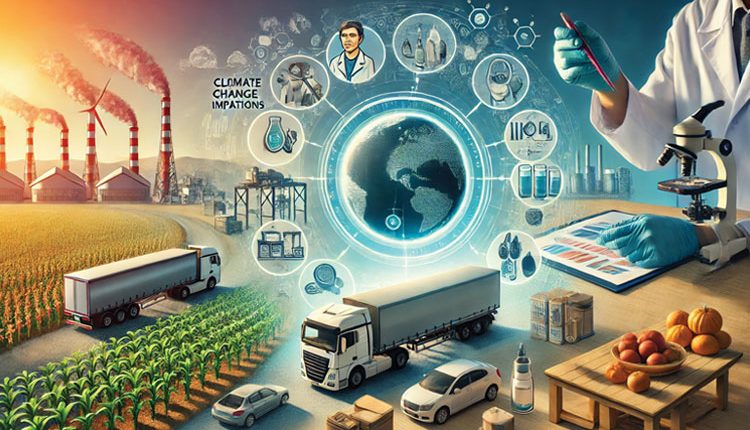Food security, defined as the availability, access, and utilization of safe and nutritious food, is a global concern. In an era of increasing population, climate change, and evolving food safety threats, robust testing and measurement (T&M) solutions are essential to ensuring food quality, safety, and sustainability. These technologies play a critical role in detecting contaminants, verifying nutritional values, monitoring supply chains, and maintaining regulatory compliance. This article explores the multifaceted contributions of T&M in safeguarding food security.
Ensuring Food Safety Through Contaminant Detection
One of the primary applications of T&M in food security is the detection of contaminants, which include:
- Biological contaminants:
Pathogens such as Salmonella, coli, and Listeria pose serious health risks. Rapid microbial testing techniques, including polymerase chain reaction (PCR) and enzyme-linked immunosorbent assays (ELISA), help in the early detection and prevention of outbreaks.
- Chemical contaminants:
Pesticides, heavy metals, mycotoxins, and antibiotic residues are major concerns in food safety. Advanced spectroscopic techniques such as inductively coupled plasma mass spectrometry (ICP-MS) and liquid chromatography-mass spectrometry (LC-MS) ensure that food products meet safety standards.
- Physical contaminants:
Metal fragments, glass, and plastics can enter the food supply chain during processing. X-ray inspection systems and metal detectors are widely used to prevent such contaminants from
reaching consumers.
Verifying Nutritional Quality and Label Accuracy
Accurate measurement of nutritional content is critical for consumer health and regulatory compliance. T&M technologies enable precise determination of:
- Macronutrients: Protein, carbohydrates, and fats are quantified using spectroscopic and chromatographic techniques to ensure food products meet declared nutritional values.
- Micronutrients: Vitamins and minerals are analyzed using techniques like highperformance liquid chromatography (HPLC) to verify fortification claims and prevent deficiencies.
- Adulteration detection: Food fraud, including dilution of milk, honey adulteration, and mislabeling of meat products, is mitigated using advanced spectroscopy and DNA barcoding.
Monitoring Supply Chain Integrity and Traceability
The complexity of modern food supply chains necessitates robust T&M solutions to ensure product integrity from farm to fork. Key technologies include:
- Blockchain and IoT integration:
These technologies enable real-time tracking of food products, ensuring authenticity and minimizing food fraud.
- Temperature and humidity sensors:
Cold chain monitoring devices help maintain optimal storage conditions for perishable goods, reducing spoilage and waste.
- Near-infrared (NIR) spectroscopy:
Used for rapid quality assessment of raw materials and finished products, ensuring consistency and compliance.
Enhancing Agricultural Productivity and Sustainability
T&M solutions play a vital role in improving agricultural efficiency and sustainability, contributing to long-term food security. Some key applications include:
- Soil and water testing:
Precision agriculture leverages soil sensors and spectrometers to optimize nutrient management and irrigation, ensuring sustainable farming practices.
- Crop health monitoring:
Drones equipped with multispectral imaging and remote sensing tools help detect diseases, nutrient deficiencies, and pest infestations early.
- Yield estimation and post-harvest management:
AI-powered image analysis and sensor-based monitoring predict crop yields and optimize storage conditions, reducing losses.
Meeting Regulatory Compliance and Global Standards
Food safety regulations are becoming increasingly stringent worldwide. T&M technologies help manufacturers and producers comply with:
- International standards:
Codex Alimentarius, ISO 22000, HACCP, and FDA regulations require rigorous testing protocols that ensure global food safety.
- Import/export requirements:
Analytical techniques such as gas chromatography (GC) and atomic absorption spectroscopy (AAS) verify compliance with pesticide residue limits, allergen labeling, and GMO regulations.
- Certifications and audits:
Food safety audits rely on laboratory testing data to grant certifications such as Organic, Halal, Kosher, and Fair Trade.
Conclusion
Testing and measurement technologies are indispensable in ensuring food security by maintaining safety, quality, and sustainability across the food supply chain. As global challenges like
climate change, population growth, and food fraud intensify, investment in advanced T&M solutions will be critical in safeguarding public health and ensuring a resilient food system. By leveraging
innovation in analytical techniques, real-time monitoring, and AI-driven insights, the future of food security can be strengthened for generations to come.




